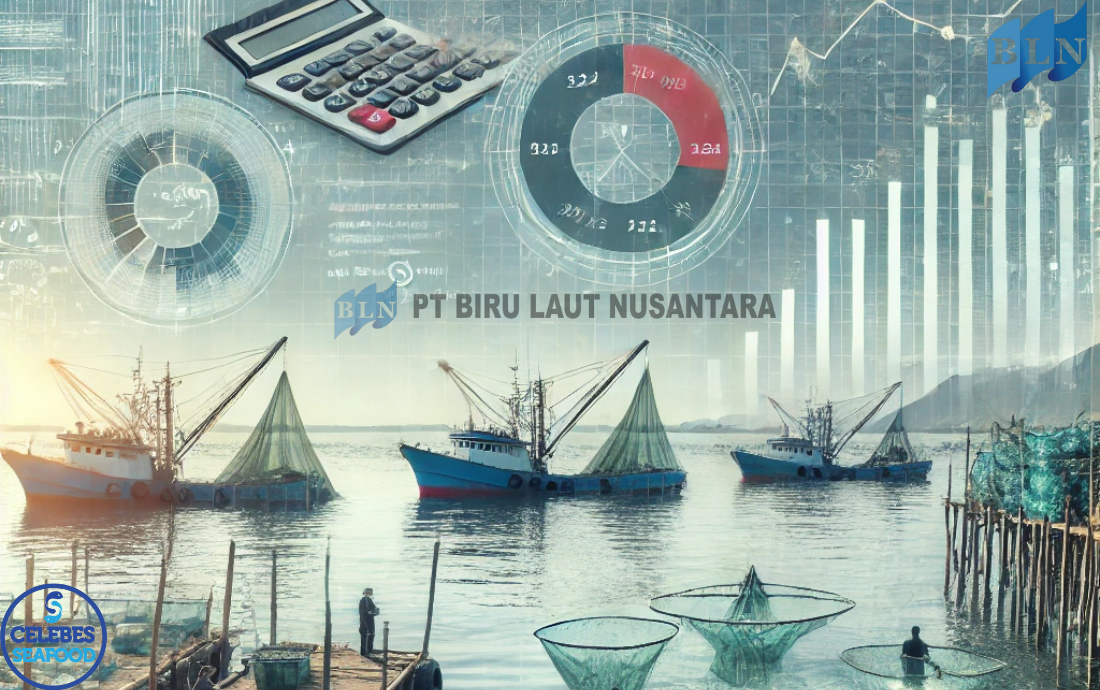Optimizing Fisheries Revenue Through Strategic Accounting
By. Azizah - 22 Jan 2025
lautnusantara.com The fisheries industry plays a critical role in feeding the global population, supporting livelihoods, and sustaining economies. However, the sector faces various challenges, such as resource depletion, fluctuating market prices, and regulatory complexities. Strategic accounting is essential for overcoming these hurdles and ensuring sustainable growth and profitability.
Key Components of Strategic Accounting for Fisheries
- Accurate Cost Analysis Understanding the full cost of operations is critical. Costs in fisheries include:
- Vessel maintenance and fuel.
- Salaries for crew and staff.
- Permits, licenses, and compliance fees.
- Marketing and distribution expenses. Strategic accounting helps allocate these costs efficiently and identify areas where savings can be made without compromising quality or sustainability.
- Revenue Forecasting Revenue in fisheries can fluctuate due to seasonal variations, market demand, and environmental factors. By using historical data and market analysis, fisheries can project future earnings and prepare for potential downturns.
- Inventory Management Effective inventory tracking ensures that products are not wasted or undersold. Accounting tools can monitor stock levels, shelf life, and sales trends to optimize pricing and reduce losses.
- Tax Planning and Compliance Fisheries often face complex tax regulations, including subsidies and import/export duties. Proper accounting ensures compliance while maximizing tax benefits.
- Sustainability Reporting Consumers and investors increasingly demand transparency regarding sustainability. Strategic accounting includes tracking environmental costs, such as carbon footprints and resource depletion, to align with sustainable practices and improve brand reputation.
Read Also : Mangroves and Fisheries: A Vital Connection for Marine Life
Tools and Technologies for Strategic Accounting
- Accounting Software Modern tools like QuickBooks, Xero, and industry-specific platforms help manage finances, track expenses, and generate reports tailored to fisheries.
- Data Analytics Advanced analytics can uncover patterns in sales, identify profitable fishing zones, and predict market trends.
- Cloud-Based Solutions Cloud accounting allows real-time data sharing and collaboration among stakeholders, making financial management more efficient.
Read Also : Effective K3 Implementation to Prevent Accidents in Fish Processing Plants
Case Study: Successful Implementation
A medium-sized fishing company in Southeast Asia implemented strategic accounting practices by:
- Using software to monitor fuel consumption and reduce unnecessary trips.
- Analyzing historical sales data to focus on high-demand species.
- Investing in sustainable fishing methods and reporting these practices transparently to gain consumer trust.
As a result, the company reduced operational costs by 15% and increased revenue by 20% within two years.
Read Also : The Origins of Halibut: Uncovering the Story Behind the Flatfish Introduction
Benefits of Strategic Accounting in Fisheries
- Enhanced Profitability: Optimizing costs and maximizing revenue streams.
- Better Decision-Making: Data-driven insights for operational improvements.
- Regulatory Compliance: Avoiding fines and ensuring smooth operations.
- Sustainability: Aligning with global environmental goals while maintaining profitability.
By adopting strategic accounting practices, fisheries can navigate the complexities of their industry while ensuring long-term financial health and sustainability.








